Corporate Headquarters
- Unico
- 3725 Nicholson Rd.
- P. O. Box 0505
- Franksville, WI 53126-0505
- 262.886.5678
Join Our Team
- Drop in your resume at –
- hr@wodehousecapital.com
- + 91 22 66336600
Contact Unico Support
Reach us for any enquiry
Disclaimer
Please see our Privacy Policy which outlines the types of information we collect and how we use it, and that we will respect your wish to opt-out of our communications at any time.
Corporate Headquarters
- Unico
- 3725 Nicholson Rd.
- P. O. Box 0505
- Franksville, WI 53126-0505
- 262.886.5678
Join Our Team
- Drop in your resume at –
- hr@wodehousecapital.com
- + 91 22 66336600
Talk to our Sales Team
Our sales professionals are eagerly awaiting your questions. Fill out the form below and we’ll be in touch. If you’re looking for product support click here
Disclaimer
Please see our Privacy Policy which outlines the types of information we collect and how we use it, and that we will respect your wish to opt-out of our communications at any time.
We use cookies on our website to give you the most relevant and seamless experience. To accept all cookies, click “Accept All”, or provide controlled consent by visiting "Cookie Settings".
Manage consent
Privacy Overview
This website uses cookies to improve your experience while you navigate through the website. Out of these, the cookies that are categorized as necessary are stored on your browser as they are essential for the working of basic functionalities of the website. We also use third-party cookies that help us analyze and understand how you use this website. These cookies will be stored in your browser only with your consent. You also have the option to opt-out of these cookies. But opting out of some of these cookies may affect your browsing experience.
Necessary cookies are absolutely essential for the website to function properly. These cookies ensure basic functionalities and security features of the website, anonymously.
| Cookie | Duration | Description |
|---|---|---|
| cookielawinfo-checkbox-analytics | 11 months | This cookie is set by GDPR Cookie Consent plugin. The cookie is used to store the user consent for the cookies in the category "Analytics". |
| cookielawinfo-checkbox-functional | 11 months | The cookie is set by GDPR cookie consent to record the user consent for the cookies in the category "Functional". |
| cookielawinfo-checkbox-necessary | 11 months | This cookie is set by GDPR Cookie Consent plugin. The cookies is used to store the user consent for the cookies in the category "Necessary". |
| cookielawinfo-checkbox-others | 11 months | This cookie is set by GDPR Cookie Consent plugin. The cookie is used to store the user consent for the cookies in the category "Other. |
| cookielawinfo-checkbox-performance | 11 months | This cookie is set by GDPR Cookie Consent plugin. The cookie is used to store the user consent for the cookies in the category "Performance". |
| viewed_cookie_policy | 11 months | The cookie is set by the GDPR Cookie Consent plugin and is used to store whether or not user has consented to the use of cookies. It does not store any personal data. |
Functional cookies help to perform certain functionalities like sharing the content of the website on social media platforms, collect feedbacks, and other third-party features.
Performance cookies are used to understand and analyze the key performance indexes of the website which helps in delivering a better user experience for the visitors.
Analytical cookies are used to understand how visitors interact with the website. These cookies help provide information on metrics the number of visitors, bounce rate, traffic source, etc.
Advertisement cookies are used to provide visitors with relevant ads and marketing campaigns. These cookies track visitors across websites and collect information to provide customized ads.
Other uncategorized cookies are those that are being analyzed and have not been classified into a category as yet.
